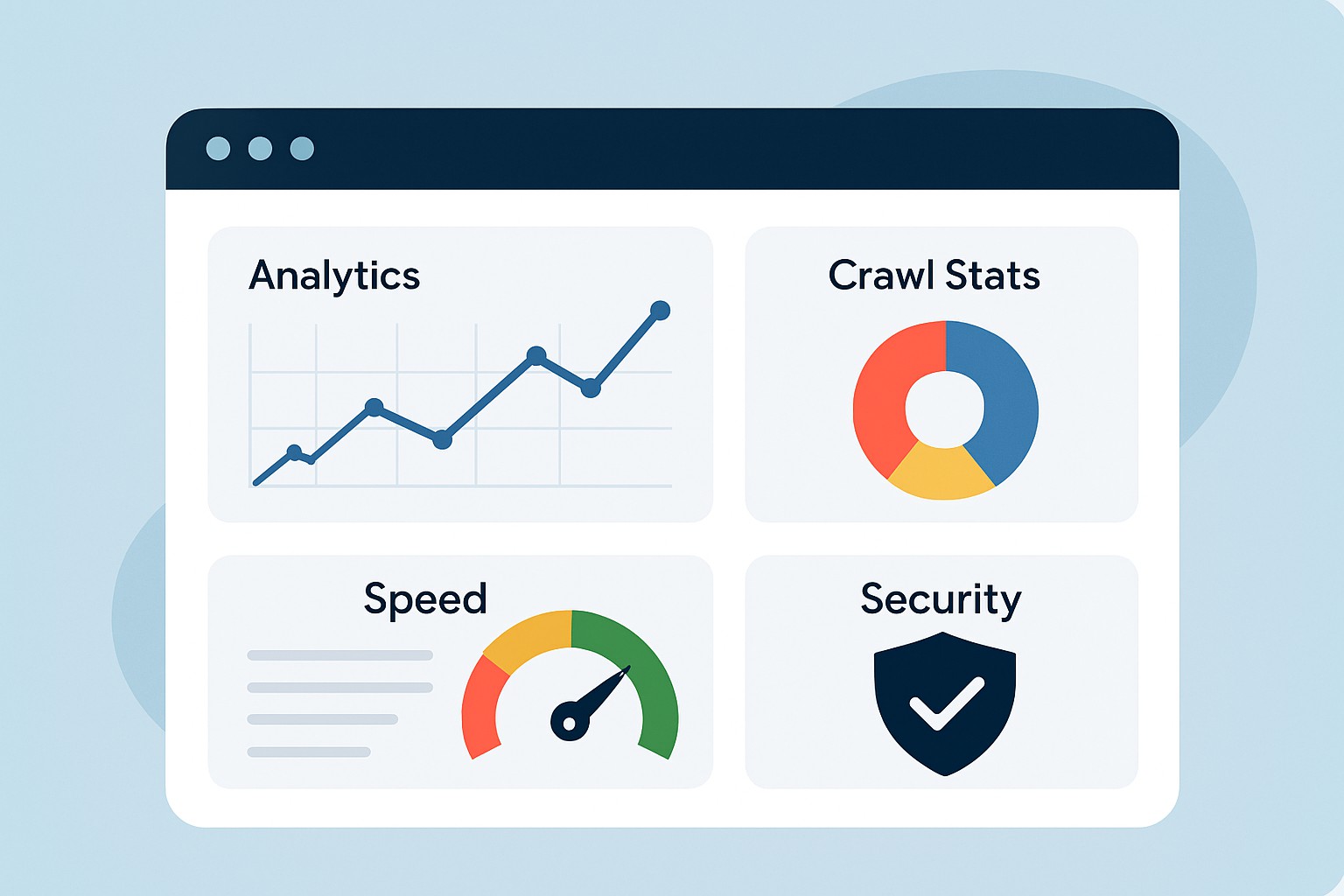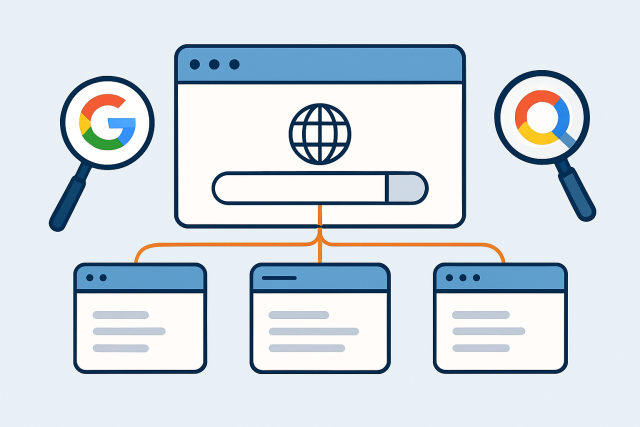How to Boost Rankings Using Technical SEO Services


Technical SEO services focus on fine-tuning your website's backbone to make it easy for search engines to crawl and index your site and boost overall performance. Unlike content or link-building SEO, technical SEO dives into the backend details that help search engines truly understand your site.
This article serves up a clear step-by-step guide crafted especially for beginners eager to get the most out of technical SEO services. By following down-to-earth tips on audits, speed optimization, mobile usability and more, you’ll not only boost your website’s rankings but also create a smoother and more enjoyable experience for your visitors.
A Closer Look at Technical SEO Services What You Might Not Realize
Technical SEO services cover a toolbox of tactics designed to strengthen your website's foundation. This includes ramping up site speed and ensuring everything runs smoothly on mobile devices. It also helps search engines crawl and index your pages without a hitch. Add structured data to enhance how your site appears in search results and keep your website’s security tight.
- Performing a thorough website audit to sniff out pesky technical SEO issues hiding under the hood
- Tracking down and fixing crawl errors that sneakily block search engines from accessing your valuable pages
- Tidying up site architecture and URL structure to make navigation smoother than a well-oiled machine
- Giving page speed a serious boost using a variety of optimization tricks that really make a difference
- Setting up HTTPS to ensure visitors enjoy a safe and secure browsing experience
- Making sure the site looks and works beautifully on mobile with responsive design that adapts like a charm
- Applying schema markup to hand search engines a clearer roadmap about your content, making their job easier and your site shine a bit brighter
Step 1 Roll Up Your Sleeves for a Thorough Technical SEO Audit
Give your website a good thorough once-over with trusty tools like Google Search Console and Screaming Frog. These tools do a neat job of flagging the usual suspects: broken links, crawl errors, duplicate content and other hiccups that can trip you up.
- Spot and fix broken or dead links that can really irritate both visitors and search engines alike
- Hunt down crawl errors like those pesky 404s and server hiccups that stop your pages from getting indexed
- Pinpoint and weed out duplicate content that tends to water down your SEO punch
- Take a good look at page loading speeds to track down any slowpokes that might be testing users’ patience
- Double-check that your XML sitemap is up-to-date and properly submitted where it counts
- Make sure your robots.txt file isn’t accidentally throwing up roadblocks for important pages
- Give mobile usability a thorough once-over so visitors on all sorts of devices enjoy a smooth, hassle-free ride
Step 2 Tackling Crawlability and Indexing Issues Like a Pro
Search engines really need a clear line of sight to your website’s content if you want to climb the rankings. A good place to start is by checking your robots.txt file and ironing out broken links. You should also give your XML sitemap some TLC to smooth out crawl issues.
Take a quick peek at your robots.txt file to make sure you’re not accidentally shutting the door on important content from those pesky crawlers.
Fix up broken links by either redirecting them or swapping out the URLs for ones that actually lead somewhere useful.
Give your XML sitemap a little TLC and submit it so search engines have an easier time sniffing out your content.
Double-check and ditch any 'noindex' tags lurking on pages you actually want to show up in search results.
Hunt down redirect chains and loops—they’re like confusing mazes for crawlers and can throw a wrench in indexing your site properly.
Step 3 Give Your Website a Boost by Turbocharging Its Speed and Performance
Websites that load quickly tend to offer a smoother and more enjoyable experience for visitors and snag better spots in search results. It’s worth giving image compression a shot, tidying up CSS and JavaScript files, enabling browser caching and of course choosing a reliable fast hosting provider that won’t slow you down.
- Minimize your CSS and JavaScript files to trim those hefty file sizes and boost your load times
- Use browser caching so your frequent visitors do not wait for assets to load again
- Choose a hosting provider that is both fast and reliable and fits your traffic like a glove
- Tweak your images by resizing or compressing and switching to modern formats like WebP; your pages will thank you
- Roll out a CDN to serve your content globally and keep pesky delays at bay

Screenshot of a website performance dashboard highlighting speed scores and optimization recommendations
Step 4 Double-Check Your Design Works Well on Mobile and Stays Responsive
Mobile usability has become absolutely vital these days especially since Google now leans heavily on the mobile version of your site for ranking and indexing. It’s really important to ensure your website is fully responsive and loads quickly on all sorts of mobile devices. It should also offer straightforward navigation with fonts that are easy on the eyes.
Give tools like Google’s Mobile-Friendly Test a try to quickly see how your site performs on mobile devices. If you are interested in digging deeper, Lighthouse is a great open-source option. It goes beyond the basics by checking performance, accessibility and SEO. These handy tools do not just point out problems like clickable elements being too close together or content running off the screen. They also offer practical tips that make sense when you want to fix these issues.
Step 5 Add Structured Data Markup
Now we are getting to the good stuff—time to sprinkle some structured data markup on your pages. This step might sound a bit techy, but stick with me; it’s like giving search engines a well-organized filing cabinet instead of a messy desk. Adding this markup helps your content stand out in search results, often with those fancy rich snippets that catch the eye. It’s a small effort with big payoff, and trust me, future you will thank you for taking this extra step.
Structured data helps search engines understand the content and context of your website better and makes everything clearer on their end. This usually improves your listings with rich snippets like reviews, events or those handy FAQs.
- Articles schema works like a charm to feature news or blog posts with handy summaries and author details that make you want to click
- Product schema lays out prices and availability and customer reviews right in the search results, saving you a ton of scrolling
- Review schema shines a spotlight on customer ratings and recommendations, giving you the lowdown at a glance
- Event schema helps get the word out about upcoming events by including dates and locations so you don’t miss a thing
- FAQ schema puts common questions and answers front and center within search snippets to make it easier for individuals to find quick info without digging around
Step 6 Beef Up Your Website Security by Switching to HTTPS
Website security is a big deal when it comes to ranking well. Moving from HTTP to HTTPS isn’t just a tech upgrade—it encrypts the data exchanged between your server and visitors. This builds trust and keeps sensitive info locked down tight. When you make this switch, you’ll want to set up 301 redirects properly from HTTP to HTTPS, update your canonical tags, and submit fresh sitemaps to the search engines. Also watch out for mixed content errors—they might sound harmless but can really throw a wrench in user experience and your SEO efforts.
Step 7 Keep a Close Watch on Your Technical SEO Health Consistently and with Care
SEO isn’t a "set it and forget it" kind of deal. It demands your ongoing care and attention, especially when it comes to technical SEO services. Make it a habit to regularly check your website’s technical health using handy tools like Moz Pro, which delivers thorough site audits and keeps an eye on your performance metrics.
Catching those pesky little issues early can save a lot of headaches down the road.
Tweak things as needed to keep things running smooth as silk.
So your data stays up to date and in tip-top shape.
Staying on top of the latest standards is a small effort that pays off big time.
Unlock Digital Marketing Success with Moz
Struggling to optimize your online presence? Moz is the ultimate Internet Marketing solution, empowering businesses with powerful SEO tools, insightful analytics, and expert guidance. Elevate your digital strategies and outshine the competition.
- Boost organic traffic with data-driven SEO tactics
- Enhance content marketing with expert recommendations
- Gain a competitive edge with comprehensive link analysis







